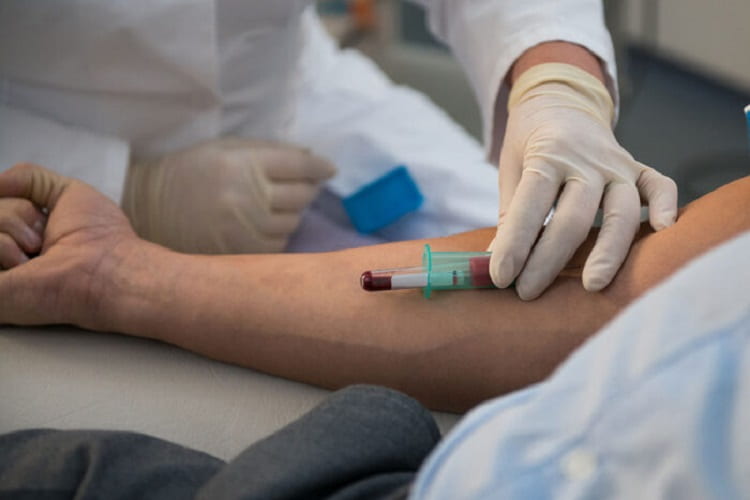Up to two decades before people develop the characteristic memory loss and confusion of Alzheimer’s disease, damaging clumps of protein start to build up in their brains. Now, a blood test to detect such early brain changes has moved one step closer to clinical use.
Researchers from Washington University School of Medicine in St. Louis report that they can measure levels of the Alzheimer’s protein amyloid beta in the blood and use such levels to predict whether the protein has accumulated in the brain. When blood amyloid levels are combined with two other major Alzheimer’s risk factors – age and the presence of the genetic variant APOE4 – people with early Alzheimer’s brain changes can be identified with 94% accuracy, the study found.
The findings, published Aug. 1 in the journal Neurology, represent another step toward a blood test to identify people on track to develop Alzheimer’s before symptoms arise. Surprisingly, the test may be even more sensitive than the gold standard – a PET brain scan – at detecting the beginnings of amyloid deposition in the brain.
Such a test may become available at doctors’ offices within a few years, but its benefits will be much greater once there are treatments to halt the disease process and forestall dementia. Clinical trials of preventive drug candidates have been hampered by the difficulty of identifying participants who have Alzheimer’s brain changes but no cognitive problems. The blood test could provide a way to efficiently screen for people with early signs of disease so they can participate in clinical trials evaluating whether drugs can prevent Alzheimer’s dementia.
“Right now we screen people for clinical trials with brain scans, which is time-consuming and expensive, and enrolling participants takes years,” said senior author Randall J. Bateman, MD, the Charles F. and Joanne Knight Distinguished Professor of Neurology. “But with a blood test, we could potentially screen thousands of people a month. That means we can more efficiently enroll participants in clinical trials, which will help us find treatments faster, and could have an enormous impact on the cost of the disease as well as the human suffering that goes with it.”
The test, an earlier version of which first was reported two years ago, uses a technique called mass spectrometry to precisely measure the amounts of two forms of amyloid beta in the blood: amyloid beta 42 and amyloid beta 40. The ratio of the two forms goes down as the amount of amyloid beta deposits in the brain goes up.
The current study involved 158 adults over age 50. All but 10 of the participants in the new study were cognitively normal, and each provided at least one blood sample and underwent one PET brain scan. The researchers classified each blood sample and PET scan as amyloid positive or negative, and found that the blood test from each participant agreed with his or her PET scan 88 percent of the time, which is promising but not accurate enough for a clinical diagnostic test.
In an effort to improve the test’s accuracy, the researchers incorporated several major risk factors for Alzheimer’s. Age is the largest known risk factor; after age 65, the chance of developing the disease doubles every five years. A genetic variant called APOE4 raises the risk of developing Alzheimer’s three- to fivefold. And gender also plays a role: Two out of three Alzheimer’s patients are women.
When the researchers included these risk factors in the analysis, they found that age and APOE4 status raised the accuracy of the blood test to 94%. Sex did not significantly affected the analysis.
“Sex did affect the amyloid beta ratio, but not enough to change whether people were classified as amyloid positive or amyloid negative, so including it didn’t improve the accuracy of the analysis,” said first author Suzanne Schindler, MD, PhD, an assistant professor of neurology.
Further, the results of some people’s blood tests initially were considered false positives because the blood test was positive for amyloid beta but the brain scan came back negative. But some people with mismatched results tested positive on subsequent brain scans taken an average of four years later. The finding suggests that, far from being wrong, the initial blood tests had flagged early signs of disease missed by the gold-standard brain scan.
